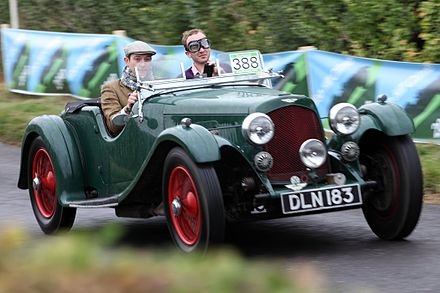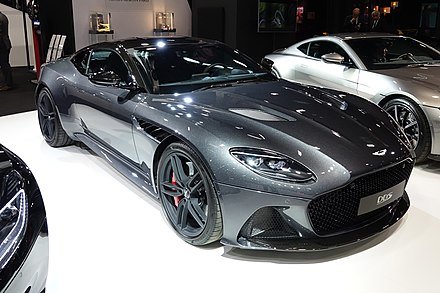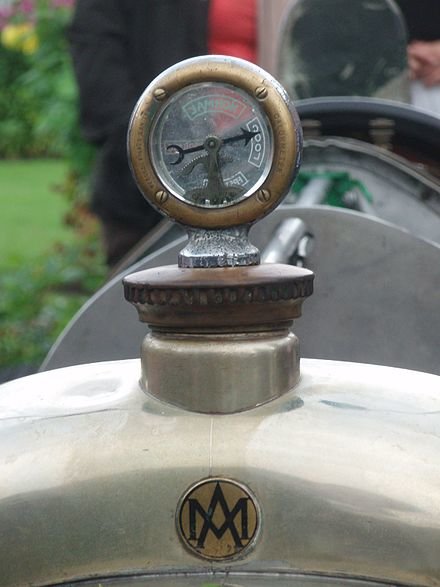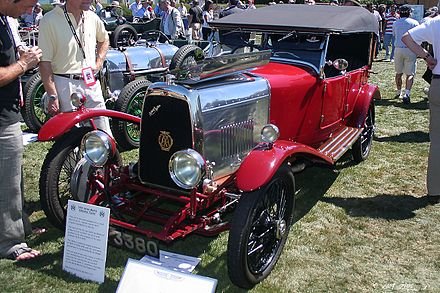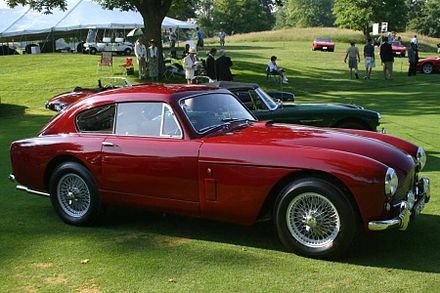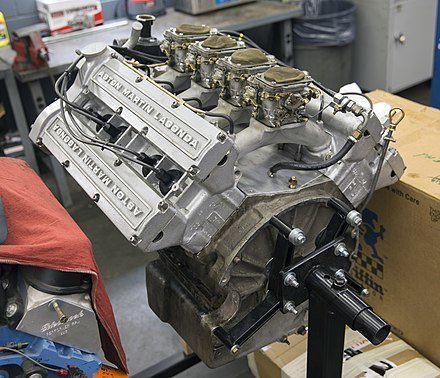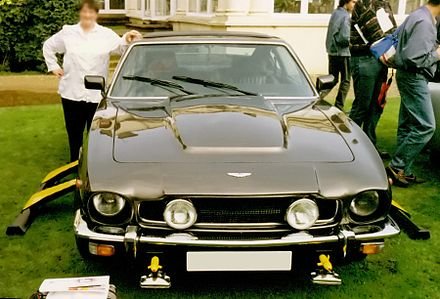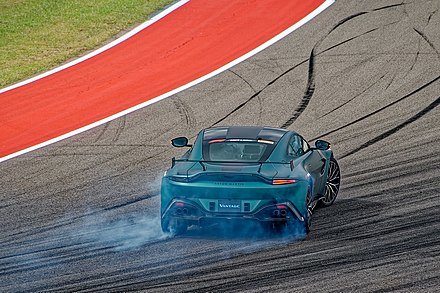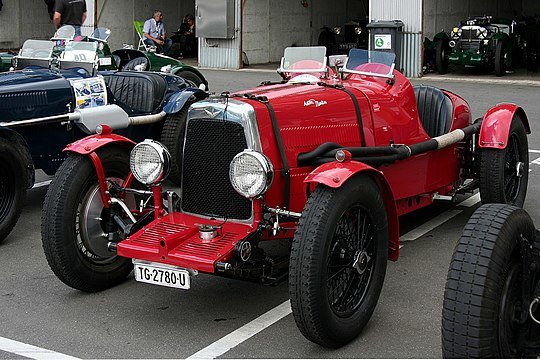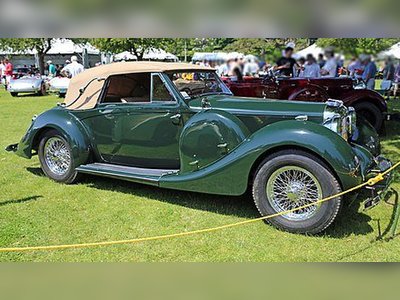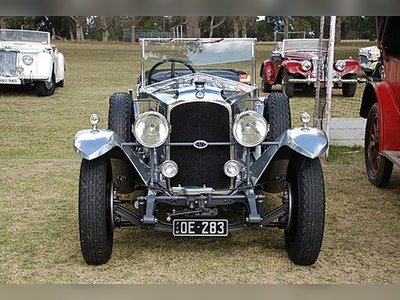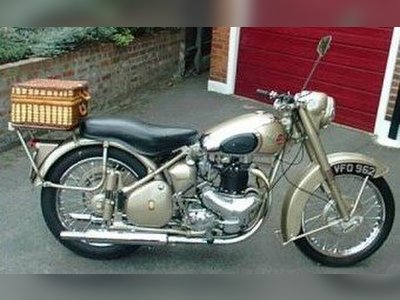British Heritage
Remember, Cherish, Learn.
beta
Aston Martin
Contribution to British Heritage - The Enduring Legacy of Aston Martin.
Aston Martin Lagonda, a British independent manufacturer of luxury sports cars and grand tourers, has left an indelible mark on British heritage. Founded in 1913 by Lionel Martin and Robert Bamford, the company has journeyed through trials and tribulations, emerging as a symbol of British craftsmanship and elegance. From its association with expensive grand touring cars in the 1950s and 1960s to becoming forever entwined with the iconic James Bond, Aston Martin has etched itself into the hearts of automotive enthusiasts worldwide.
The inception of Aston Martin took place in 1913 when Lionel Martin and Robert Bamford combined their passion for automobiles and created Bamford & Martin, a company that sold and serviced cars. Aston Martin's first car, named after its founder Lionel Martin, was created in 1915 by fitting a four-cylinder Coventry-Simplex engine to the chassis of a 1908 Isotta Fraschini. However, the outbreak of World War I halted production, and the company was refocused on other wartime efforts.
After the war, Aston Martin rose again with new premises in Kensington and the support of Count Louis Zborowski. In the 1920s, they produced cars that set world speed and endurance records at Brooklands. Unfortunately, financial troubles led to the acquisition of the company by David Brown Limited, which gave birth to the classic "DB" series of cars.
Aston Martin's legacy was further solidified in the 1960s when it became the car of choice for the fictional British secret agent, James Bond. The iconic DB5 model featured in the 1964 film "Goldfinger" captured the imaginations of moviegoers worldwide and forever linked Aston Martin to the suave and sophisticated world of espionage.
Throughout its history, Aston Martin faced numerous challenges and financial difficulties. The company survived seven bankruptcies, but each time it emerged stronger, reinforcing its position as a resilient and enduring symbol of British excellence.
Aston Martin's reputation as a British cultural icon extends far beyond its home shores. It holds a Royal Warrant as purveyor of motorcars to the Prince of Wales since 1982, signifying its significance to the British monarchy. The company's global presence is evident with over 160 car dealerships in 53 countries, making it a truly international automobile brand. Furthermore, Aston Martin's presence on various products, including submarines, real estate developments, and aircraft, has further amplified its global influence.
In recent years, Aston Martin embarked on ambitious endeavors to expand its product range and embrace new technologies. A partnership with Daimler AG resulted in incorporating Mercedes-AMG engines and infotainment systems into its cars, paving the way for the successful DB11 and V8 Vantage models. Additionally, the brand ventured into the SUV market with the DBX, further diversifying its offerings.
In August 2018, Aston Martin Lagonda Global Holdings plc made its debut on the London Stock Exchange, marking a new chapter in the company's history. Canadian billionaire Lawrence Stroll led a consortium, injecting capital and restructuring the company. Aston Martin's commitment to the future is evident through investments in new manufacturing facilities and plans to build electric vehicles by 2025.
Aston Martin's journey from its humble beginnings to becoming a British cultural icon has been nothing short of extraordinary. Its contribution to British heritage extends beyond just luxury sports cars, as it has embedded itself in popular culture through the James Bond franchise. Despite facing numerous challenges, the company's perseverance and commitment to innovation have ensured its lasting legacy in the automotive world. As it continues to expand and embrace new technologies, Aston Martin's allure as an emblem of British heritage and luxury remains timeless.
The Legendary Beginnings
The inception of Aston Martin took place in 1913 when Lionel Martin and Robert Bamford combined their passion for automobiles and created Bamford & Martin, a company that sold and serviced cars. Aston Martin's first car, named after its founder Lionel Martin, was created in 1915 by fitting a four-cylinder Coventry-Simplex engine to the chassis of a 1908 Isotta Fraschini. However, the outbreak of World War I halted production, and the company was refocused on other wartime efforts.
The Golden Era
After the war, Aston Martin rose again with new premises in Kensington and the support of Count Louis Zborowski. In the 1920s, they produced cars that set world speed and endurance records at Brooklands. Unfortunately, financial troubles led to the acquisition of the company by David Brown Limited, which gave birth to the classic "DB" series of cars.
The James Bond Connection
Aston Martin's legacy was further solidified in the 1960s when it became the car of choice for the fictional British secret agent, James Bond. The iconic DB5 model featured in the 1964 film "Goldfinger" captured the imaginations of moviegoers worldwide and forever linked Aston Martin to the suave and sophisticated world of espionage.
Surviving Adversity
Throughout its history, Aston Martin faced numerous challenges and financial difficulties. The company survived seven bankruptcies, but each time it emerged stronger, reinforcing its position as a resilient and enduring symbol of British excellence.
Global Recognition and Expansion
Aston Martin's reputation as a British cultural icon extends far beyond its home shores. It holds a Royal Warrant as purveyor of motorcars to the Prince of Wales since 1982, signifying its significance to the British monarchy. The company's global presence is evident with over 160 car dealerships in 53 countries, making it a truly international automobile brand. Furthermore, Aston Martin's presence on various products, including submarines, real estate developments, and aircraft, has further amplified its global influence.
Investing in the Future
In recent years, Aston Martin embarked on ambitious endeavors to expand its product range and embrace new technologies. A partnership with Daimler AG resulted in incorporating Mercedes-AMG engines and infotainment systems into its cars, paving the way for the successful DB11 and V8 Vantage models. Additionally, the brand ventured into the SUV market with the DBX, further diversifying its offerings.
A New Chapter
In August 2018, Aston Martin Lagonda Global Holdings plc made its debut on the London Stock Exchange, marking a new chapter in the company's history. Canadian billionaire Lawrence Stroll led a consortium, injecting capital and restructuring the company. Aston Martin's commitment to the future is evident through investments in new manufacturing facilities and plans to build electric vehicles by 2025.
Conclusion
Aston Martin's journey from its humble beginnings to becoming a British cultural icon has been nothing short of extraordinary. Its contribution to British heritage extends beyond just luxury sports cars, as it has embedded itself in popular culture through the James Bond franchise. Despite facing numerous challenges, the company's perseverance and commitment to innovation have ensured its lasting legacy in the automotive world. As it continues to expand and embrace new technologies, Aston Martin's allure as an emblem of British heritage and luxury remains timeless.
- Aston Martinen.wikipedia.org
